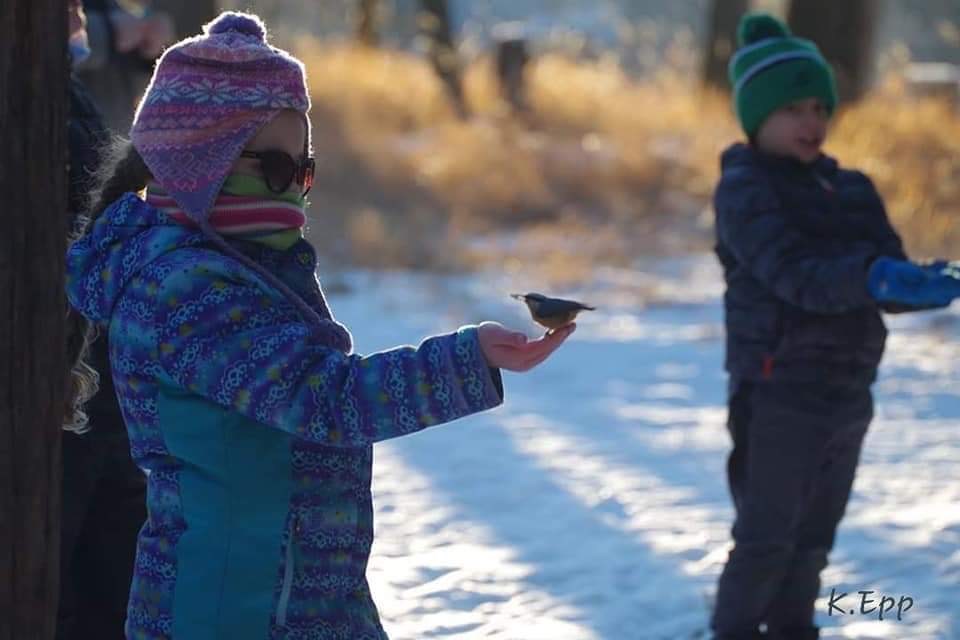During a bird feeder workshop earlier in November, Kim Epp of the Moose Jaw Nature Society shared some need-to-know facts about the birds that call Moose Jaw home even during the winter.
Wakamow Valley has plenty of feathered visitors that appreciate help from bird feeders, some large and small.
Little songbirds like chickadees, redpolls, and nuthatches have to feed constantly all day to survive the cold nights, and larger birds like blue jays, magpies, sparrows, woodpeckers, and even robins rarely turn down a good snack.
If you’re interested in installing a feeder in your own yard to help the birds this winter, there are a number of different types available.
For a low-effort feeder, something as simple as hanging a pinecone or a bagel slathered in peanut butter and birdseed works well. The Nature Society suggests adding some clean, crushed up eggshells to the seed to give the birds a boost in calcium for their beaks and feet.
Traditional feeders are also good, although it’s important to remember that they may attract animals that perhaps aren’t welcome — squirrels love to pick through bird feeders, and can finish an entire feeder full of seed in a few hours. Larger birds, like magpies and blue jays, will also bully smaller birds away from the feeder.
Putting out more than one feeder could solve this problem, especially if you vary the type of seed in each, or choosing a feeder that deters squirrels.
Black oil sunflower seed is the most popular type of bird feed, although it is best to choose a mix of oilseeds to provide more rounded nutrition. Squirrels and blue jays enjoy peanuts, but squirrels hate saffron seed.
Suet cakes are another way to help keep birds well-fed in the winter months, although they require a bit more work. Rendering down beef suet and mixing in seeds, fruits, peanut butter, eggshells, and whatever else you have available creates a filling combination of nutrients for all birds.
Remember to keep an eye on suet cakes, as they will go rancid if left out too long. It’s also a good idea to empty and clean out bird feeders every week or two, to get rid of any bacteria and avoid spreading infections between birds.
If it's not possible to put up a bird feeder in your own yard, the Moose Jaw Nature Society has installed a bird feeder down in Wakamow Valley. The area is a great place to try hand-feeding birds, especially if you come prepared.
Chickadees and nuthatches are the most likely to pick seeds right out of your palm, especially if you mix in some pine nuts with your oilseed mix — those are a favourite and the birds will linger to pick out the pine nuts.
The trick to feeding out of hand is to be very still and relax, say experts. Birds will land on your hands and even on your head if the seed is enticing enough, and the more often you return to feed them, the more comfortable the birds will get.
The Moose Jaw Nature Society often heads down into Wakamow Valley to hand feed the birds, and are a great resource to contact with any questions about getting involved with feeding the local birds.




